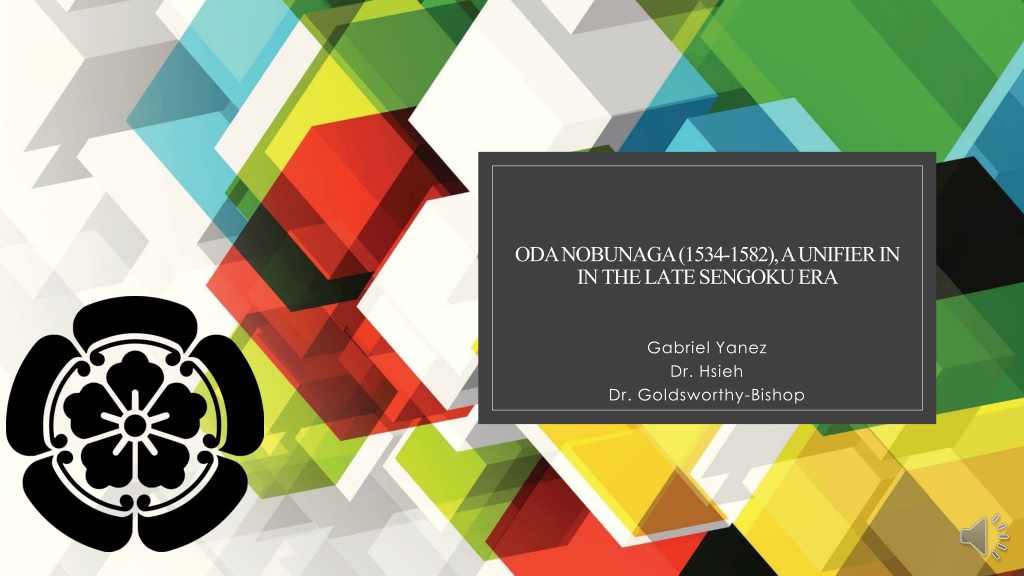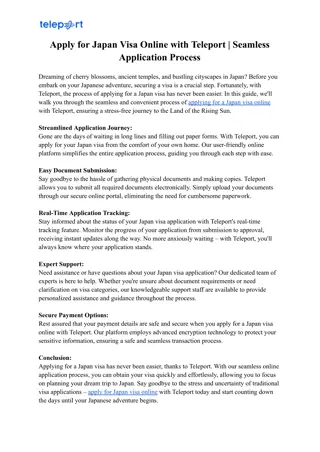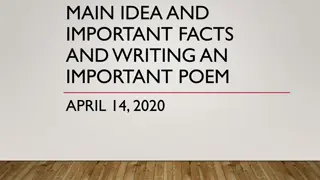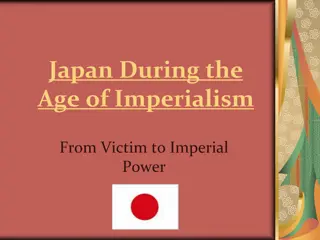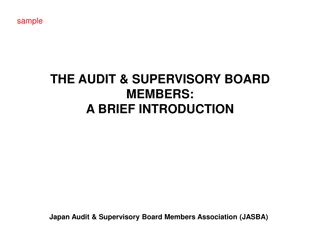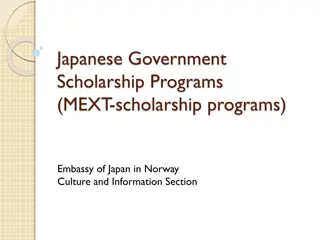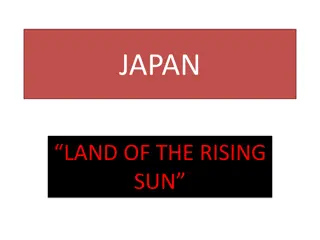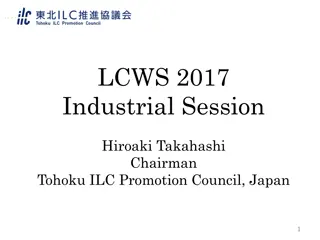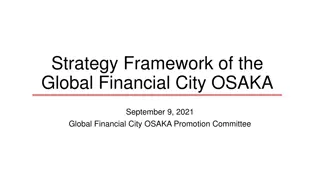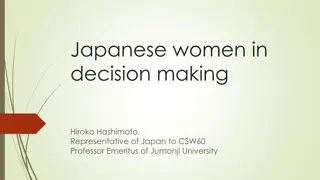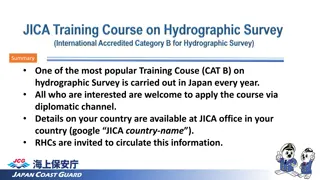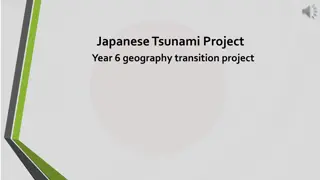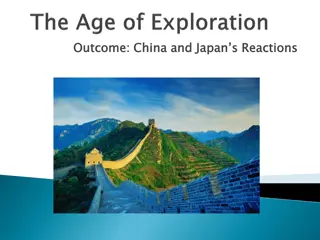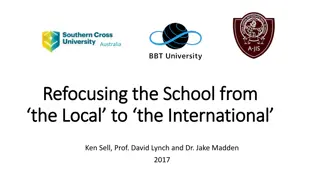Oda Nobunaga: Unifier of Sengoku Era Japan
Oda Nobunaga, a prominent warlord of the 16th century, played a pivotal role in unifying Japan during the late Sengoku Era. By asserting control, eliminating the Ashikaga Shogunate, and reshaping economic and social structures, Nobunaga left a lasting impact on Japan's history.
Download Presentation

Please find below an Image/Link to download the presentation.
The content on the website is provided AS IS for your information and personal use only. It may not be sold, licensed, or shared on other websites without obtaining consent from the author.If you encounter any issues during the download, it is possible that the publisher has removed the file from their server.
You are allowed to download the files provided on this website for personal or commercial use, subject to the condition that they are used lawfully. All files are the property of their respective owners.
The content on the website is provided AS IS for your information and personal use only. It may not be sold, licensed, or shared on other websites without obtaining consent from the author.
E N D
Presentation Transcript
ODA NOBUNAGA (1534-1582), A UNIFIER IN IN THE LATE SENGOKU ERA Gabriel Yanez Dr. Hsieh Dr. Goldsworthy-Bishop
Thesis Statement The 16thcentury warlord, Oda Nobunaga is remembered as one of the three Unifiers of Sengoku Era Japan. As the first of the three Unifiers, Nobunaga brought change to Japan by bringing the country under his control, by eliminating the Ashikaga Shogun who conspired with other warlords to halt Nobunaga s unification process.
Secondary Sources Nakaseko, Rokuro. "Highlights in Japan's Educational Development." Pacific Affairs 2, no. 1 (1929): 15-19. Accessed February 13, 2020. doi:10.2307/2750162. An article about the structure of Japanese education and how it changed. The article introduced the view of Nobunaga as a scourge to Buddhists and the role that Buddhists played in Japanese education before Meiji Restoration. Gay, Suzanne. The Moneylenders of Late Medieval Kyoto. Honolulu: University of Hawai i Press, 2001. A book about the relationship that Moneylenders had with the monks of Enryakuji on Mount Hiei and the role that the monks played into socioeconomic of Kyoto, the then capital of Japan during the 16thcentury. Lamers, Jeroen Pieter. Japonius Tyrannus: The Japanese Warlord, Oda Nobunaga Reconsidered. Japonica Norrlandic; Vol. 8. Leiden: Hotei Pub., 2000. A monography on Oda Nobunaga that breaks down the view of Nobunaga as thee scourge towards Buddhists and the role he played to shaping the late Sengoku Era.
Primary Sources Comical Warriors: New Year s Rice Cakes for the Reign of Our Lord Utagawa, Yoshitora. Comical Warriors: New Year s Rice Cakes for the Reign of Our Lord, Comical Warriors: New Year's Rice Cakes for the Reign of Our Lord (D ke musha miyo no wakamochi), Museum of Fine Arts Boston, accessed May 5th, 2020, https://collections.mfa.org/objects/465058/comical-warriors-new-years-rice-cakes-for- the-reign-of-our?ctx=0411bbe6-1e96-45a6-8a9a-ef3b3cd1d71e&idx=0. The Chronicle of Lord Nobunaga O ta, Gyu ichi, Elisonas, J. S. A., and Lamers, Jeroen Pieter. The Chronicle of Lord Nobunaga. Brill's Japanese Studies Library; v. 36. Leiden; Boston: Brill, 2011. Written by one of Nobunaga s retainers, Ota Gyuichi was an eyewitness to many of the events that occurred during Nobunaga s rise to power and assassination. An ukiyo-e painting done by Utagawa Yoshitora in the 19thcentury. Depicts Nobunaga pounding mochi rice with the assistance of Akechi Mitsuhide, his assassin, while Toyotomi Hideyoshi shapes the cakes and Tokugawa Ieyuasu eats them.
Conclusion What Oda Nobunaga did to help Unify Japan during the Sengoku Era. Unify his homeland of Owari. Unify most of Japan before his death in 1582. Broke the economic hold of Enryakuji had on Kyoto. Ended the Ashikaga Shogunate. Created Azuchi, a town outside of Kyoto to promote economic growth. Did away with the guild system in Japan.
